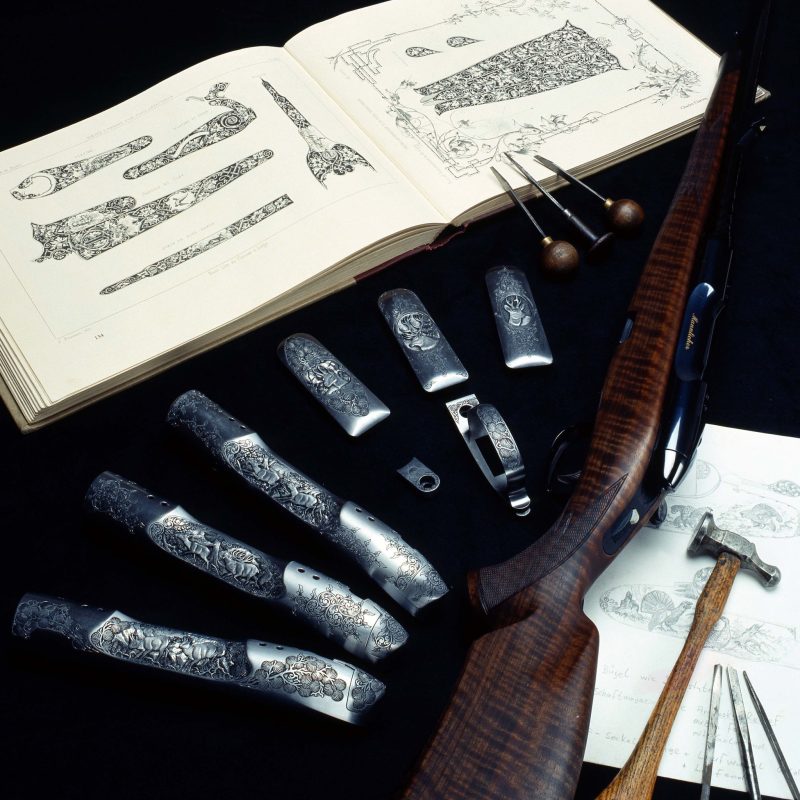Weaponry has evolved through the millennia as one builder improves upon the previous one’s designs and armies steal each other’s technology in perpetual competition to gain the edge. That evolution accelerated dramatically during the tenure of Steyr’s greatest employee, perhaps the greatest firearms engineer and inventor of all time, Ferdinand Mannlicher.
The visionary gunmaker was born on January 20, 1848. His family lived until he was 9 in the Austrian Garrison at the Confederation Fortress in Mainz, Germany, where his father served as a military official—providing the young man ample exposure to all manner of weaponry. They returned to Vienna in 1857 where he graduated high school then began college at the Vienna University of Technology.

The 1866 Austrian defeat by Prussian forces in the Battle of Königgrätz devastated an 18-year-old Mannlicher. He and others attributed the defeat to his countrymen’s inadequate armaments, igniting a lifetime of fascination and tinkering with firearms technology. Though starting his career with the state railway company, he traveled to the 1876 Centennial Exposition World’s Fair in Philadelphia to study the cutting-edge gun innovations of the time. He submitted his first repeating rifle design for patent just three years later.
Josef Werndl, a fellow gun designer and owner of the Austrian Arms Factory in Steyr, finally convinced Mannlicher to join him there in 1878. With such resources at his disposal, Mannlicher began designing new guns and parts at a truly astonishing rate. In 1885, he introduced the world to the cartridge clip, for the first time allowing a shooter to load multiple rounds in one motion instead of individually into a magazine. That revolutionary M1895 with its straight-pull bolt action was adopted by the Austrian Army and several others. The iconic Mannlicher-Schoenauer Rifle he designed with his protégée Otto Schoenauer became a favorite of militaries and hunters the world over.

A mind ahead of its time, Mannlicher created several semi-auto and automatic rifle and pistol designs that only failed because the modern metallurgy and gunpowder chemistry had not yet evolved far enough to suit his needs. Manufacturing abilities and military acceptance interfered with his vision too. Once the technology and political will caught up, however, his drawings and models inspired the M1 Garand and M1 Carbine, German MG 34 and 42 machine guns, M1941 Johnson machine gun, and countless other weapons over the following century. You can still see his fingerprints on any detachable magazine, turning bolt action, and short-stroke piston semi-auto available today.
Steyr grew into one of the largest weapons manufacturers in the world under Mannlicher’s guidance, their guns being used in most world conflicts and hunting grounds for the coming century. In total, he designed about 150 guns with more than a dozen named after him.

Mannlicher’s genius and contributions were highly celebrated in his lifetime. In 1887 he was awarded the Austrian Order of the Iron Crown and later the Prussian Order of the Crown and the French Legion of Honor. Emperor Franz Joseph of Austria honored him with knighthood in 1892 and a lifelong appointment to the Austrian Upper House of Parliament in 1899.
Mannlicher died unexpectedly at age 55 and was buried in the Vienna Woods in 1904 shortly after his timeless MS 1903 first lit up the stage at the World’s Fair in St. Louis. Steyr grew into one of the largest weapons manufacturers in the world under his vision and often included his name on business cards and rifle barrels as recently as 2019. Steyr-Mannlicher in many ways became the sophisticated and successful company that it is because of one masterful mind.
